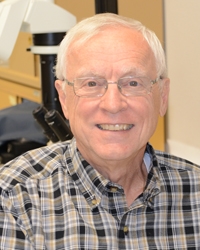Dissolution textures and cementation patterns in the Holocene Isla Cancun Eolianite aragonitic ooids; Modern analog for understanding ancient ooid grainstone pore networks
Presenter
Robert G. Loucks, Senior Research Scientist, Bureau of Economic Geology
Abstract
The Holocene Cancun Eolianite along the eastern shore of Isla Cancun in Yucatan, Mexico is an excellent natural laboratory for investigating sedimentological and diagenetic processes in a carbonate eolian-dune system. The eroded outcrops, composed of loose ooid sand to lithified ooid grainstone, presents well-exposed dune stratification consisting of climbing translatent stratification, grainfall laminations, and sandflow cross-stratification. The sediments are composed of aragonitic ooids that are undergoing extensive early diagenesis in the vadose zone by meteoric water. Different parts of the eolianite have achieved various stages of diagenesis, which allows an understanding of the progression of aragonite ooid sand/grainstone stabilization. Dissolution of the unstable aragonite and Mg-calcite nuclei is creating moldic pores and the generated calcium carbonate is reprecipitated as very fine to fine-crystalline calcite equant calcite in interparticle pores. In ooid cortices, aragonite needles are undergoing dissolution by breaking up into nanoballs. No cement is being reprecipitated in the dissolving nuclei for lack of suitable nucleation sights. The Cancun Eolianite vadose zone is a closed system relative to conservation of calcium carbonate. The amount of dissolution of aragonite and Mg-calcite approximates the amount of very fine to fine-equant calcite cement in the interparticle pore space. The early pore network has many similarities to ancient pore networks in ooid grainstones such as cement-reduced interparticle pores, cortex dissolution band pores, moldic pores, and abundant nano- to micropores in altered ooids. Concepts derived from investigating the Cancun Eolianite can be applied to understanding ancient ooid reservoir pore networks as how they formed and evolved.
